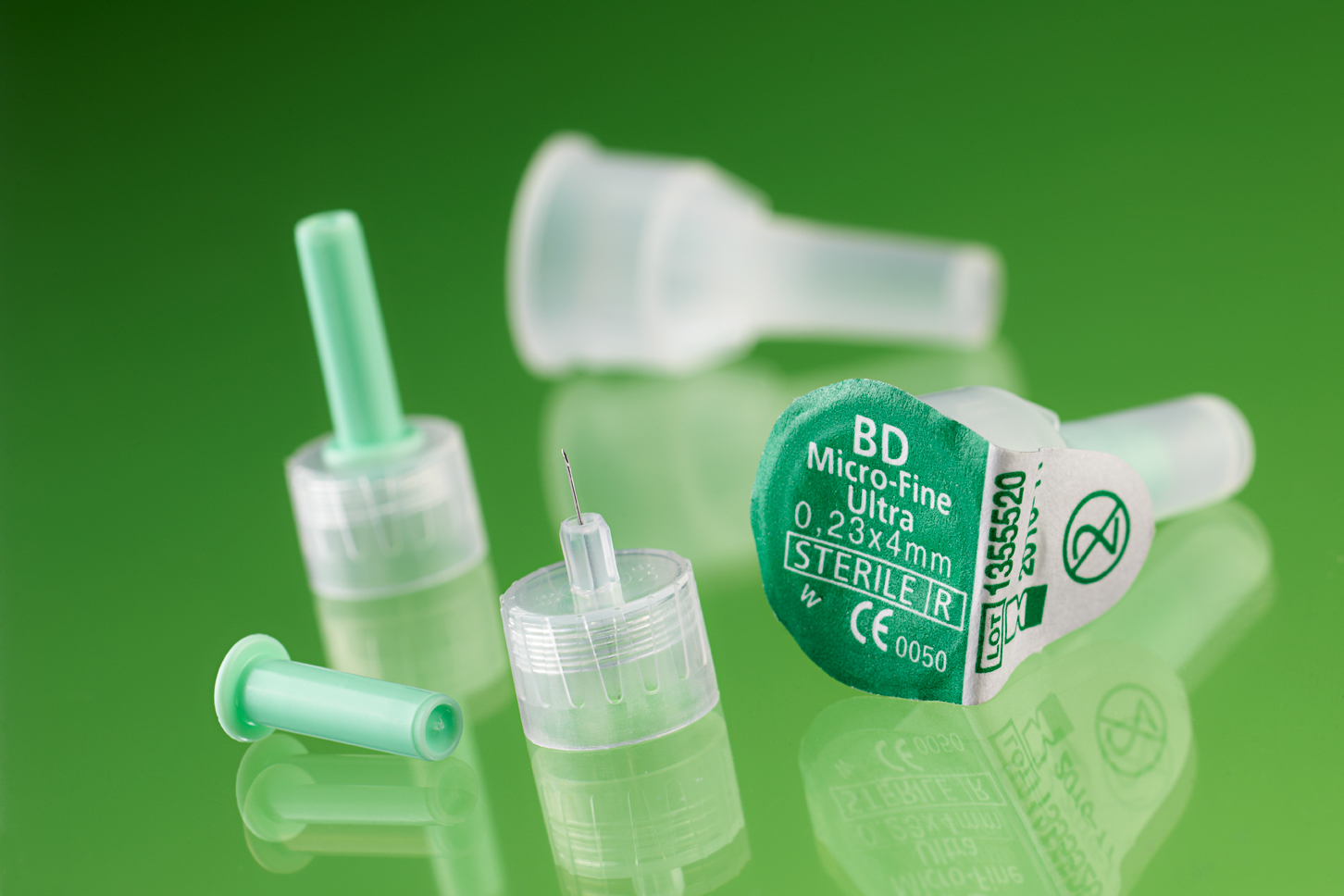RELATED PRODUCTS NOT AVAILABLE
BD Micro-Fine UltraTM 4mm
Pen Needle
embecta is committed to helping you inject your insulin correctly
.jpg)


- Overview
- Products & accessories
embecta offers a full portfolio of pen needles for a wide variety of patient needs
Overview
A recent study showed that people with diabetes were making at least 1 mistake in how they inject insulin. This can lead to insulin not working the way it should.1,2« With our pen needle technology and helpful resources, embecta is committed to helping you correctly inject your insulin.
Accuracy
The BD Micro-Fine Ultra™ 4mm Pen Needle helps to reduce the risk of injecting into your muscle compared to needles 6mm and longer. 3*
Comfort
The BD Micro-Fine Ultra™ 4mm Pen Needle can significantly help reduce pain during injection compared to larger and longer pen needles.4† The 5-bevel needle tip can bring a more comfortable and less painful injection.5^
Confidence
The BD Micro-Fine Ultra™ Pen Needle has ultra-thin wall technology to increase the flow of insulin so less thumb pressure is needed to push the pen button—making it easier for you to give the injection and giving you confidence that you have received the full dose of insulin.6¥
Compatibility
BD Micro-Fine Ultra™ 4mm Pen Needles are compatible with widely used pen injection devices, so even if your regimen changes, you won’t have to change your choice of pen needle.7
Single Use
Use a new pen needle every time you inject. Pen needles are recommended to be used only once and are no longer sterile after that. There is an association between needle reuse and injection pain or bleeding.1
« N = 230 patients with diabetes across Canada. Participants answered a survey as part of the cross-sectional observational behavioral study. BD helped fund this study.
* IM risk was estimated based on 90- or 45-degree insertion. Skin surface to muscle depth was measured by ultrasound. No actual injections were performed.
† Relative injection pain was evaluated via a 150 mm/VAS scale. P<0.02; clinical significance is indicated by 10 mm difference in the VAS scale.
^ Compared to 3-bevel pen needles; 86 patients with diabetes participated in a randomized, non-inferiority crossover trial. During the blinded portion of the study there was no difference in pain; during the non-blinded portion of the study there was statistical difference, P<0.01.
¥ 198 patients with diabetes were included in this prospective, multicenter, randomized, open-label, 2- period, crossover study to evaluate differences in perceived thumb force and in confidence that the full dose of insulin was delivered, between the participants’ usual pen needle (PN) and the corresponding extra-thin wall (XTW) pen needle while using a manually operated insulin pen. Both outcomes were considered statistically significant if the 95% confidence interval (CI) for the mean VAS score was either positive (XTW preferred) or negative (current PN preferred). Significant differences favoring XTW pen needles were seen for perceived thumb force and confidence that the full dose was delivered by 28.4 mm (95% CI, 23.7-33.2), and 24.4 mm (95% CI, 19.7 – 29.1), respectively; (all, P < 0.001).
1. Frid AH, et al. New Insulin Delivery Recommendations. Mayo Clinic Proceedings. 2016;91(9):1231–1255
2. Bari B, Corbeil MA, Farooqui H, et al. Insulin injection practices in a population of Canadians with diabetes: an observational study. Diabetes Ther. 2020;11(11):2595-2609.
3. Gibney MA, Arce CH, Byron KJ, Hirsch LJ. Skin and subcutaneous adipose layer thickness in adults with diabetes at sites used for insulin injections: implications for needle length recommendations. Curr Med Res Opin. 2010;26(6):1519-1530
4. Hirsch LJ, Gibney MA, Albanese J, et al. Comparative glycemic control, safety, and patient ratings for a new 4 mm x 32G insulin pen needle in adults with diabetes. Curr Med Res Opin. 2010;26(6):1531-1541.
5. Hirsch L, Gibney M, Berube J, Manocchio J. Impact of a modified needle tip geometry on penetration force as well as acceptability, preference, and perceived pain in subjects with diabetes. J Diabetes Sci Technol. 2012;6(2):328-335
6. Stainless steel needle tubing for the manufacture of medical devices —requirements and test methods. ISO 9626. 2016.
7. Aronson R, Gibney MA, Oza K, et al. Insulin pen needles: effects of extra-thin wall needle technology on preference, confidence, and other patient ratings. Clin Ther. 2013;35(7):923-933.
false
false
embecta, formerly part of BD. BD is the manufacturer of the advertised products.